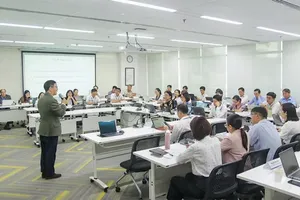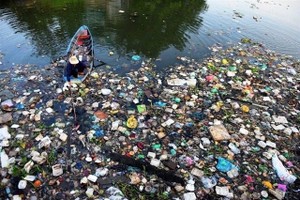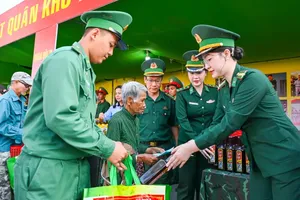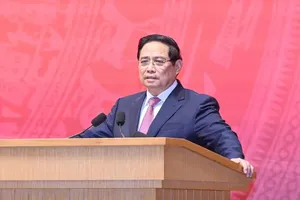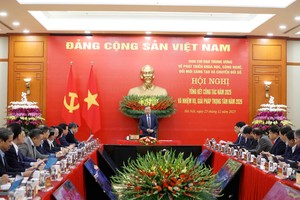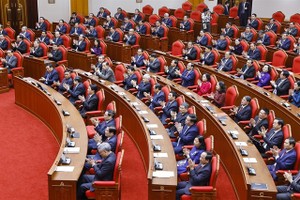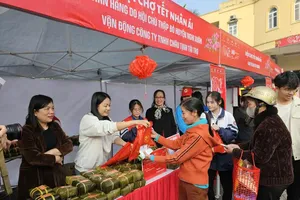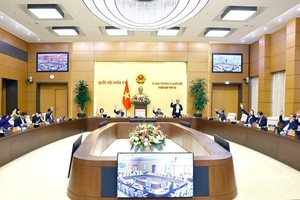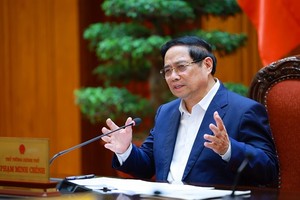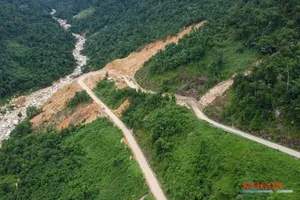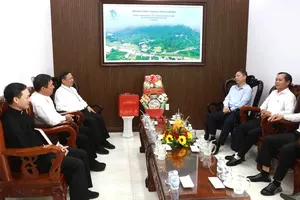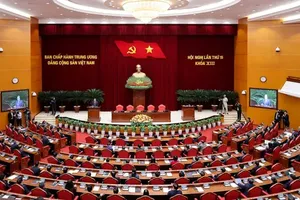 |
People go to HCMC by train. |
The Ministry of Transport has announced that transportation restructuring will be vigorously pursued in the near future. The investment will focus on two areas, namely waterways, and railways, to reduce logistics costs, enhance economic competitiveness, and above all, ensure traffic safety and reduce the burden on roads.
Railway plays a leading role
According to the Ministry of Transport, Conclusion No.49-KL/TW (Conclusion No.49) issued by the Politburo on February 28, 2023, on the development orientation of Vietnam's railway transportation until 2030, with a vision to 2045, will create favorable conditions for the development of the railway industry in the coming years. Conclusion No. 49 states that railway transportation will play a leading role in the North-South economic corridor, the main transportation corridor from East to West, and passenger transportation in major cities.
Following the issuance of Conclusion No. 49, Deputy Prime Minister Tran Hong Ha immediately signed a decision that approved the policy plan, solutions, and resources required to implement the railway network planning during the 2021-2030 period, with a vision to 2050. From 2021 to 2025, the government will allocate nearly VND16 trillion from public investment sources for the railway sector. From 2026 to 2030, a total of VND224 trillion will be arranged, which includes both public investment and other legal capital.
Mr. Dang Sy Manh, General Director of the Vietnam Railway Corporation (VNR), expressed that this is a significant opportunity for the railway industry to reclaim its important role as a mode of transport in Vietnam, gradually reducing logistics costs and bolstering the economy's competitiveness. However, to capitalize on this opportunity, the Ministry of Transport needs to expedite the implementation of railway projects according to the plan. Currently, the progress of many planned railway projects has been delayed.
Several railway projects, such as the Eastern ring railway in the Hanoi metropolitan area, the Bien Hoa-Vung Tau line, and the railway connecting the seaport of Hai Phong to Lach Huyen, are currently in the research phase. However, no concrete results have been obtained yet for other significant railway projects, including the Lao Cai-Hanoi-Hai Phong, Hanoi-Dong Dang, HCMC-Can Tho, Dak Nong-Chon Thanh, Di An-Loc Ninh line which is intended to link up with the trans-Asian railway, as well as the Vung Ang-Cha Lo (Mu Gia) line, which is designed to connect with the Lao railway.
Amidst the wait for investments, the VNR is pursuing several measures to strengthen its transportation business and infrastructure to increase revenue. According to Mr. Dang Sy Manh, a significant new feature of the restructuring plan currently being presented to the State Capital Management Committee for Enterprises is the proposal to establish a technology and service center to improve the management capacity of the railway ticketing and cargo service system.
In the near future, the VNR plans to carry out a pilot program at 15 stations. In addition, VNR is awaiting the detailed planning of stations, including international transit stations and key stations in Hanoi and Ho Chi Minh City, to develop plans for constructing commercial and service complexes at passenger terminals and logistics centers at cargo stations, to gradually increase the transportation capacity of the railway industry.
The railway industry aims to complete the approval of the investment policy for the North-South high-speed railway project by 2025 and commence priority sections during the period of 2026-2030, such as the Hanoi - Vinh and HCMC - Nha Trang lines.
By 2030, the goal is to start construction of several lines connecting international seaports, including Hanoi - Hai Phong and Bien Hoa - Vung Tau, international border gates, such as Hanoi - Lao Cai and Hanoi - Lang Son, as well as international airports, such as Thu Thiem - Long Thanh. Investment for the HCMC - Can Tho line will be made through a public-private partnership (PPP) or other suitable investment methods. The investment will also be continued to ensure the completion of the Hanoi - Ha Long line.
Leveraging the advantages of inland waterways
Alongside the focus on railway investment, the Ministry of Transport also prioritizes the development of inland waterways due to its significant potential and competitive advantage in low-cost transportation of goods over medium distances of 300-500km compared to roads and railways.
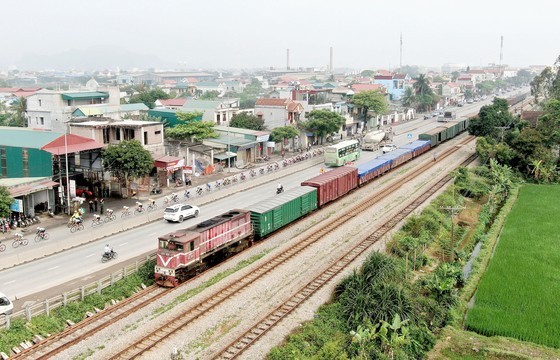 |
The North-South cargo train passes through Ninh Binh Province. |
Mr. Tran Do Liem, Chairman of the Vietnam Inland Waterway Transportation Association, has emphasized that to enhance the competitiveness of inland waterways, it is crucial to reduce transportation time and boost productivity by leveraging large-capacity vessels. It will lead to significant cost savings in transportation. To accomplish this, early investments in upgrading, dredging, and renovating canal routes to meet inland waterway standards and investing in inland ports are necessary.
Mr. Bui Thien Thu, Director of the Vietnam Inland Waterways Administration (VIWA), has stated that the mid-term public investment plan for the 2021-2025 period of the Ministry of Transport will prioritize projects aimed at developing the waterway transportation and logistics corridor in the Southern region. Currently, the VIWA is actively preparing to begin construction on the project to improve the static stability of bridges and roads that intersect the national inland waterway - phase 1 in the Southern region, in 2023. The project, which has a total investment of over VND2.15 trillion from the State budget, is anticipated to be completed by 2025.
Under this project, nine new bridges will be constructed in the Mekong Delta region, including O Mon, Thoi Lai, Dong Thuan, Dong Binh, Vam Xang - Thi Doi, Sa Dec, Moc Hoa, Hong Ngu, and Mo Cay. Additionally, the Giong Gang Bridge will undergo upgrades and renovations, while the old Mang Thit Bridge will be dismantled.
If completed early, this project will fundamentally solve the bottlenecks and congestion points on transportation corridors in the Southern region. At the same time, the project to invest in channel infrastructure for large-tonnage ships to enter the Hau River - phase 2, with a total cost of about VND2.596 trillion, is currently being implemented by units at an urgent pace. The Ministry of Transport has instructed the Maritime Project Management Board to closely monitor the construction progress, not approve extension requests, and demand that the project be completed in 2023.
In the Northern region, there are four major transportation routes: Hanoi - Haiphong - Quang Ninh; Hanoi - Viet Tri - Lao Cai; Quang Ninh – Hai Phong - Ninh Binh; and Hanoi - Nam Dinh - Ninh Binh. The Ministry of Transport plans to raise funds through socialization to construct inland ports connected to road transport to transport goods via waterways.
In the Southern region, there are four corridors: HCMC - Can Tho - Ca Mau, HCMC - An Giang - Kien Giang, Ba Ria - Vung Tau - Tay Ninh – HCMC, and the waterway transport corridor connecting with Cambodia via the Tien and Hau rivers. The VIWA estimates that the demand for inland waterway cargo transport will reach around 715 million tons by 2030, with an average annual growth rate of 8.65 percent, a high average growth rate in the near future.
